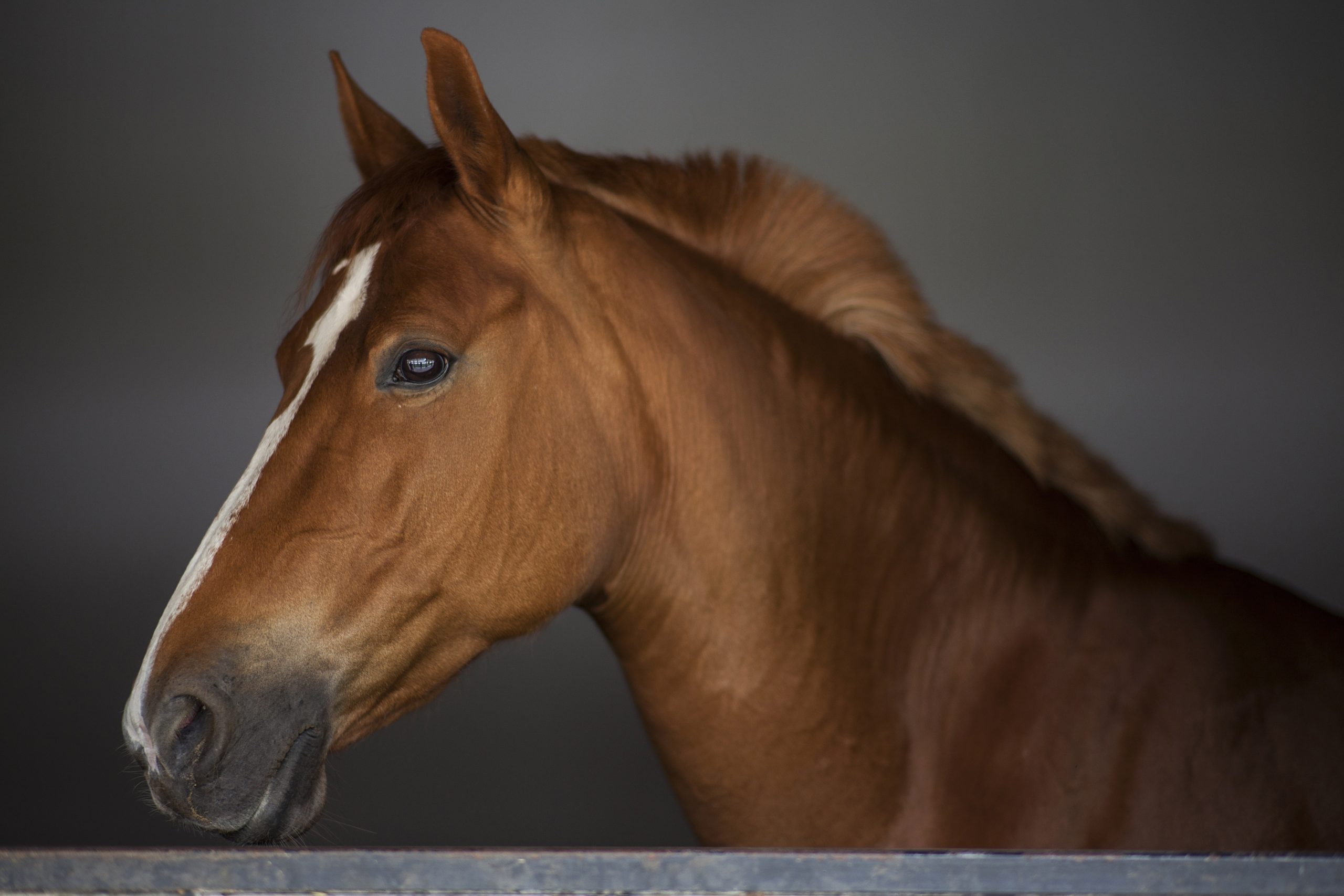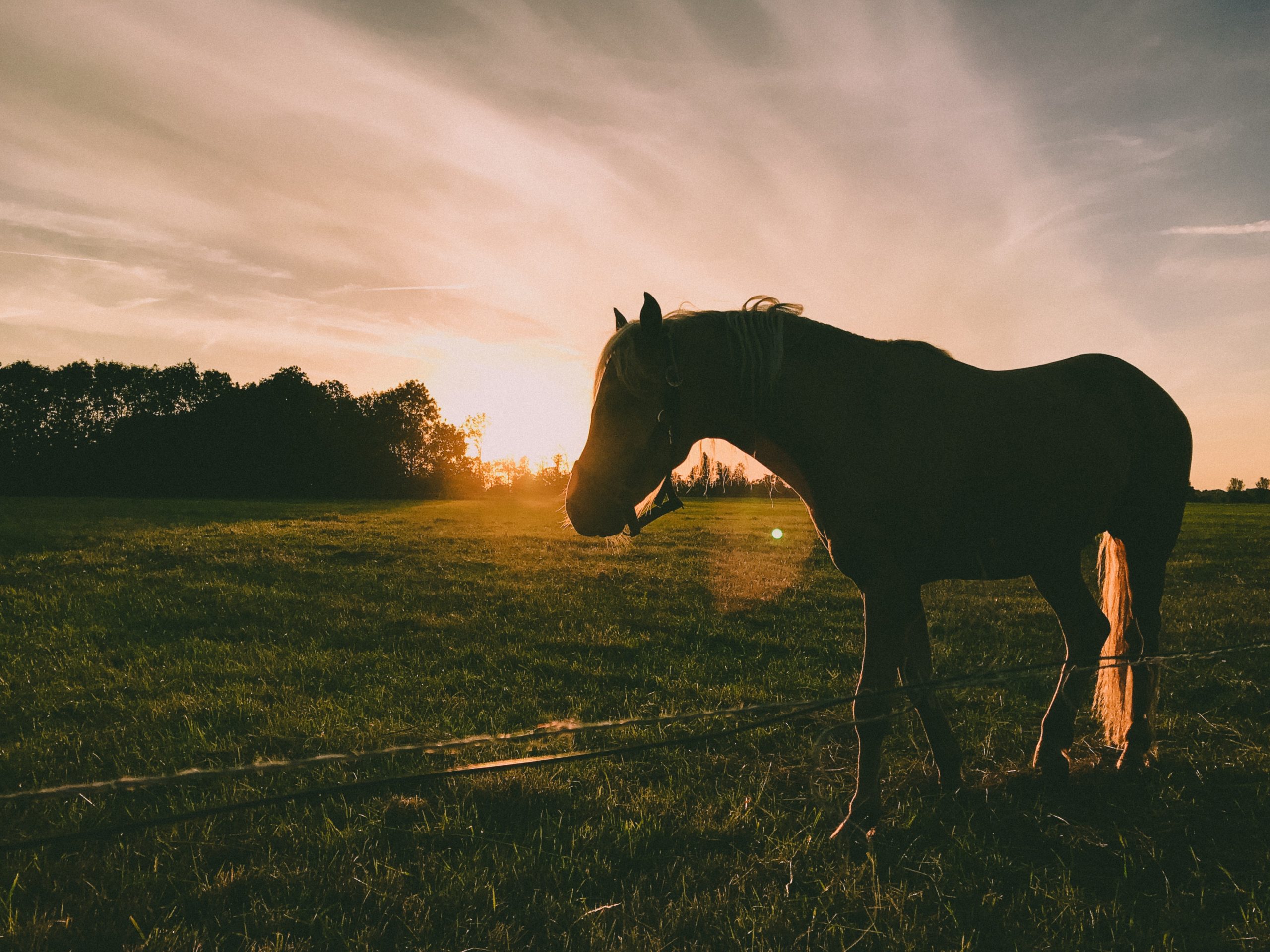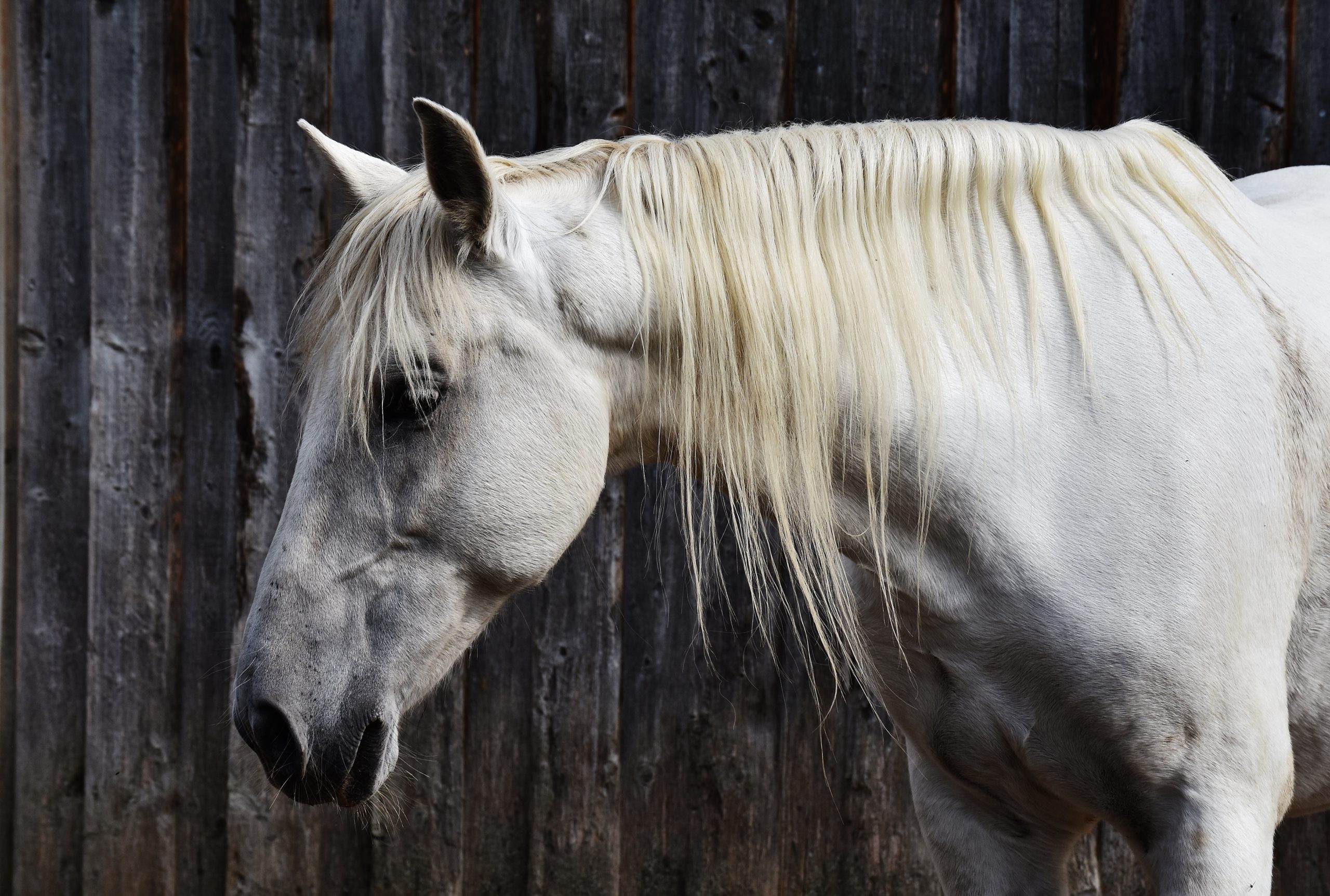Everybody knows horses need forage and grain…but how much? How often? What kind? What else?
The answers may be slightly different for each horse depending on size, breed, use, and stage of development.
Fortunately for the average horse owner, equine nutritionists have formulated feeds and diets for many types of horses.
These diets and products are based on National Research Council guidelines built after studying years of nutrition research.
Forage
The horse is designed to graze more or less continuously, ingesting a large amount of fibrous material over the course of each day. Although the stomach is relatively small, the hindgut is quite large, and its function is critical to the horse’s health and nutrition.
The hindgut is inhabited by billions of microbes that aid in the digestion of fiber. Fibre fermentation produces volatile fatty acids including butyrate, acetate, and propionate that can be used by horses to meet their energy needs.
To maintain proper function of the intestinal tract, all horses should be fed some roughage daily. An amount equal to 1-1.5% of the horse’s body weight is suggested as a minimum. High-quality pasture is often the easiest and most economical way to meet the horse’s fibre requirement, and turnout on pasture can be an important part of a good feeding program.
Management of pasture is critical to maintaining forage quality. Soil testing should be done routinely, with liming, fertilizing, mowing, and rotating scheduled as needed.
Hay is the fiber alternative used most often if pasture is not available. Orchardgrass, fescue, and timothy are typical grasses made into hay; alfalfa and clover are legumes used for the same purpose. Legumes are generally higher in nutritive value than are grasses, but many classes of horses do not require this level of nutrition.
Good hay should be sweet-smelling, green, leafy, and free of weeds and tough, stemmy plants. Mouldy or dusty hay should not be fed to horses. Plants develop more indigestible lignin (woody material) as they mature, so hay cut earlier in the growth cycle is generally more appetizing and nutritious than plants that have been allowed to grow to full size.
For some feeding programs, the so-called ‘super fibres’ such as soy hulls and beet pulp are excellent choices to provide the benefits of fibre as well as contributing energy.
Grain
While some classes of horses get along well on forage alone, hard-working horses need additional dietary energy. Grain-based concentrates have traditionally provided this extra energy.
Plants store energy in their seeds in the form of starch, and these energy-packed cereal grains such as oats, corn, and barley are staples of many livestock diets. The chains of glucose molecules that make up starch are metabolized in the horse’s small intestine to produce glycogen.
Fat
Another energy source is fat, which is about 2.25 times as energy-dense as an equivalent amount of starch. Easily digested in the small intestine, fat is absorbed as free fatty acids.
This source of energy may reduce the amount of glycogen burned in low-intensity exercise. While fat can be used by all classes of horses, concentrates with added fat (those that contain more than about 5% fat) are particularly well suited to horses performing intense exercise.
Protein
Some protein is a necessity, but all proteins are not the same in terms of quality and digestibility. Protein in equine diets should be selected to provide essential amino acids.
Soybean meal is one of the leading protein sources due to its high lysine content. This amino acid is essential, especially for young growing horses, as the horse cannot synthesize this ‘building block’ for making and repairing tissue.
Young horses need higher levels of protein than do mature, idle, or lightly worked horses.
Minerals
Because of the many critical functions they perform, minerals are important for all classes of horses, and minerals may be the only thing needed to round out an idle pasture-fed horse’s nutrient requirement.
Mineral needs vary for different ages and classes of horses.
Calcium and phosphorus, in the correct ratio (at least 1.5 to 1) as well as adequate amounts, are crucial for bone formation and maintenance, muscle contraction, energy metabolism, and blood clotting.
Sodium and chloride are important electrolytes provided through most feeds or by access to a free-choice salt block.
Magnesium, potassium, iron, copper, zinc, manganese, and selenium are also needed in small amounts.
Horse owners don’t need to worry about types, amounts, and ratios of minerals, as the better commercial feeds are formulated to meet the requirements of horses in each class, developmental stage, and use if feeding directions for the product are followed.
Vitamins
These nutrients are needed to keep various body systems functioning properly. Some vitamins need to be consumed as the horse eats, and others are synthesized in the horse’s body.
Some vitamins can be stored in the horse’s body for later use; because the horse has reserves of these substances, supplementation can occasionally cause a toxic reaction. Other vitamins can’t be stored and should be supplied on a frequent basis to avoid deficiencies and keep the body supplied with materials it needs to function.
Just as with minerals, a well-formulated feed contains levels of vitamins that are in keeping with the needs of the horses for which the feed is prepared. By feeding at the recommended rate, owners can feel confident they are meeting the needs of their equine charges.
Feed forms
Straight grains – corn, oats, barley – can be fed whole or slightly processed. Palatability is generally good, but these grains by themselves don’t supply all the nutrients necessary for growth and development in young horses or for tissue maintenance and energy production in intensely exercised horses.
Textured feed, or sweet feed, is a mixture of several cereal grains and molasses. A balancer pellet is included to provide minerals and vitamins. Other ingredients such as powdered fat, rice bran, and beet pulp may be added. Sweet feed is dustless, sweet-smelling, and palatable to most horses; it is somewhat messy to handle and may tend to mould in hot, humid climates.
Pelleted feeds generally contain the same ingredients as sweet feeds. The ingredients are ground, steam-treated, and forced through a pelleting die. Pellets eliminate sorting of ingredients by picky horses. They have a longer shelf life and are not likely to mould.
Feed management
Hay and grain need to be stored in a dry place where contamination by dust and rodents can be avoided and where horses don’t have access. Hay should be fed several times a day, avoiding long periods where the horse has nothing to nibble on. Owners should be sure that horses always have access to fresh, clean water.
The daily grain ration should be broken up into two, three, or more small feeding of less than five pounds each. Owners should consult with feed dealers to select products designed for the type, age, and use of each horse in their care. After using a scale or weight tape to determine each horse’s size, the owner can check feeding instructions for the amount to give each horse.
Taking into account the horse’s body condition (too thin, too heavy, or about right) and work level, the owner can monitor weight loss or gain every month or so, adjusting the amount or type of forage and concentrate to keep the horse healthy and energetic.




